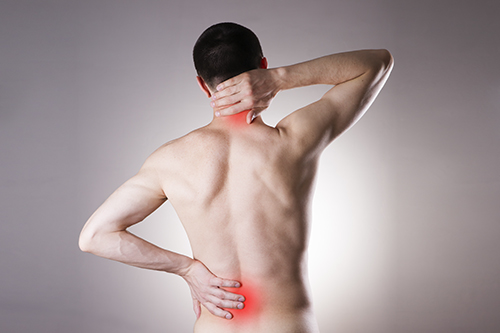 For many people the health of your spine is not an active concern until problems arise. Although sudden severe injuries such as an auto accident or accident at work can occur, much of the time neck and back injuries build up over the course of years. Poor posture and ergonomics place excessive strain on your neck and back, stretching and weakening ligaments.
For many people the health of your spine is not an active concern until problems arise. Although sudden severe injuries such as an auto accident or accident at work can occur, much of the time neck and back injuries build up over the course of years. Poor posture and ergonomics place excessive strain on your neck and back, stretching and weakening ligaments.
Eventually, back pain could result, potentially even tearing of a joint disc. This often occurs with a mundane and common event such as lifting groceries, standing up out of a chair, sitting, or lifting a child out of a crib. Although you may have done such things for years without apparent problems, when you examine the activity, you can often identify specific movements or body positions that place excess strain on your body over time and could be improved.
A common theme with activities and body positions that lead to excess accumulated strain is that many of these activities place a lot of shear force on your joints. Shear forces are forces side to side that promote sliding. Conversely, compression forces press joint surfaces together. Compression forces in the spine are controlled well by the bones and the discs. Shear forces are controlled by the ligaments and muscles and often don’t have as much support from the bones.
Many activities are done in ways that feel easier or take less energy. However, many of these motions move the weight and strain that would be carried by your muscles onto the ligaments and bone. Bone can grow and strengthen in response to stress over time, but ligaments have a poor blood supply and are unable to contract as muscles do. Over time ligaments can become stretched in a process called hysteresis and may even tear if stressed excessively. Common movements and body positions that place excess strain on the joints and ligaments include slouching, bending when lifting, or bending and resting your head on your chest.
Poor posture and body positioning can lead to patterns of muscle imbalance that can further contribute to stress and strain on the joints and ligaments. Classic examples include upper crossed and lower crossed syndromes. In upper crossed syndrome, the muscles of the upper back and the pectorals are excessively tight, and the muscles of the neck and mid back are weak. This often manifests in a head forward posture that is often seen when using smart phones or computers. In lower crossed syndrome, the low back muscles and hip flexors are excessively tight and the abdominals and gluteals are weak.
Contact your Chiropractor if you are suffering from back pain, whether from an acute event such as an auto accident, or if your back pain has developed over time.


